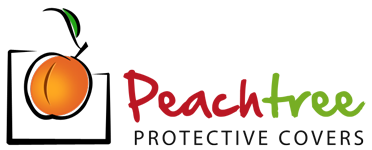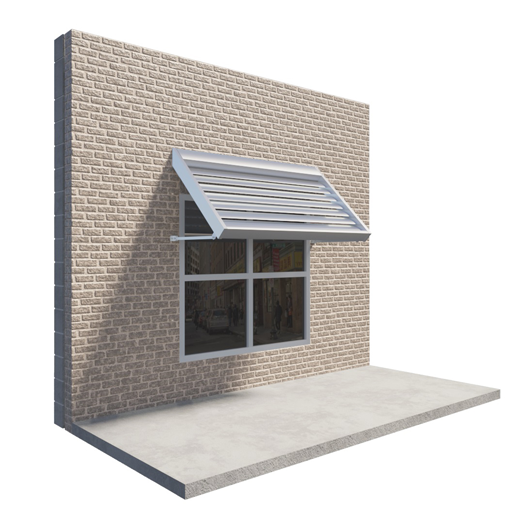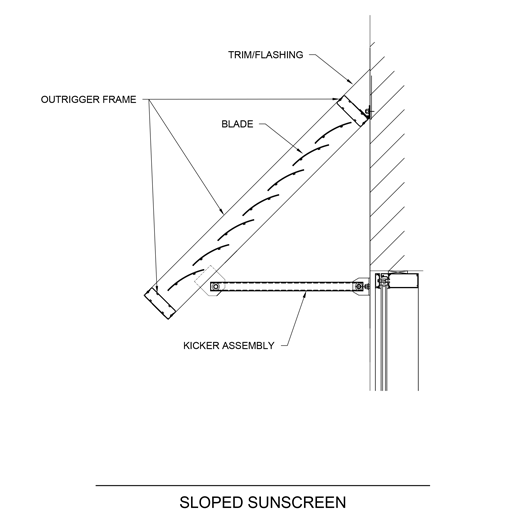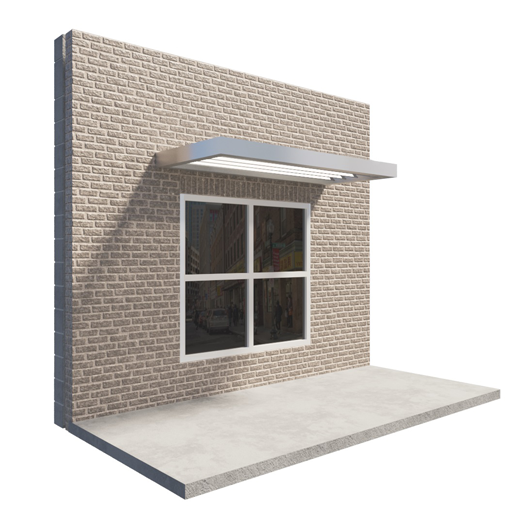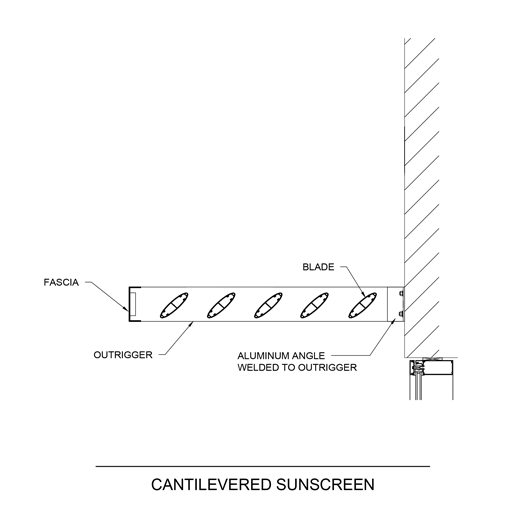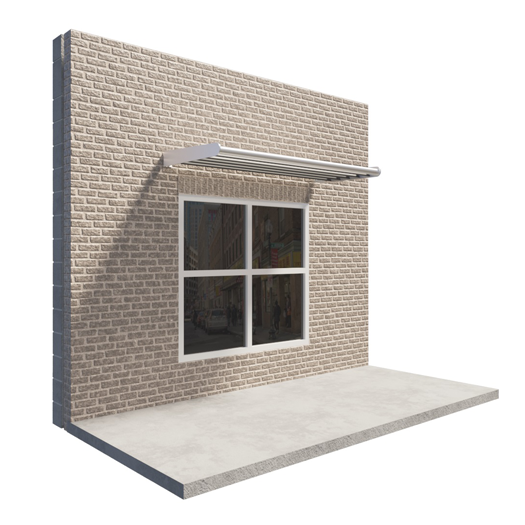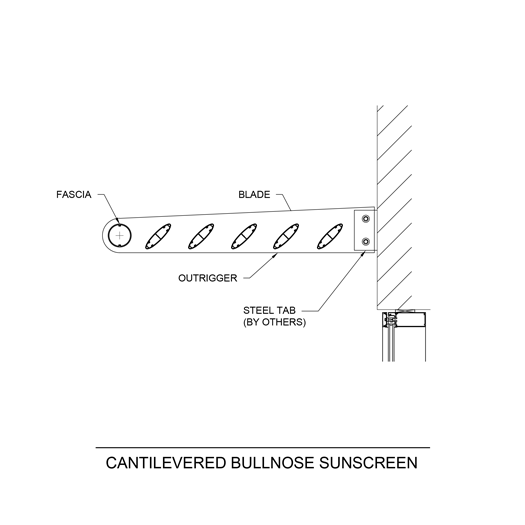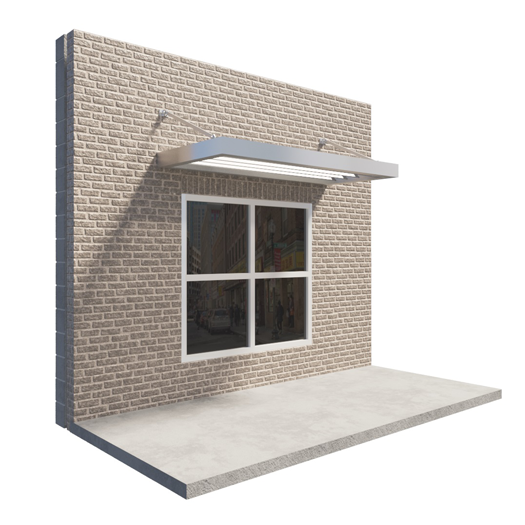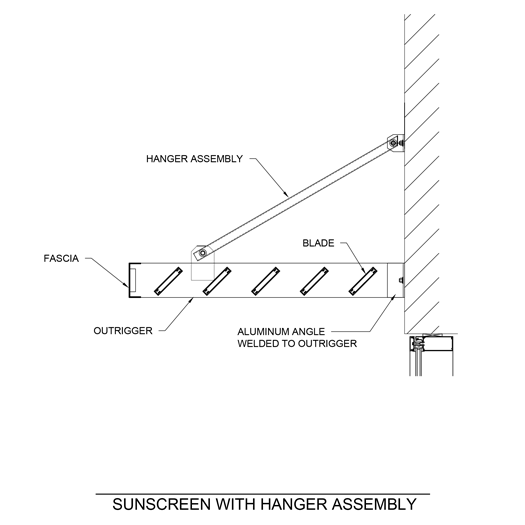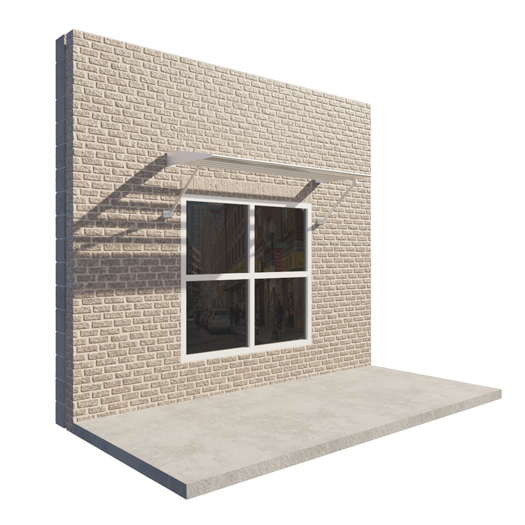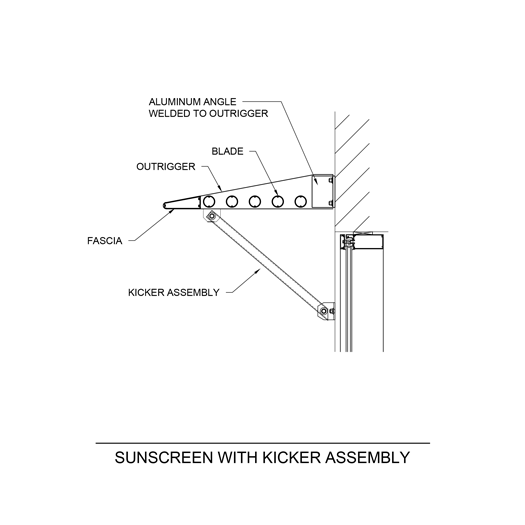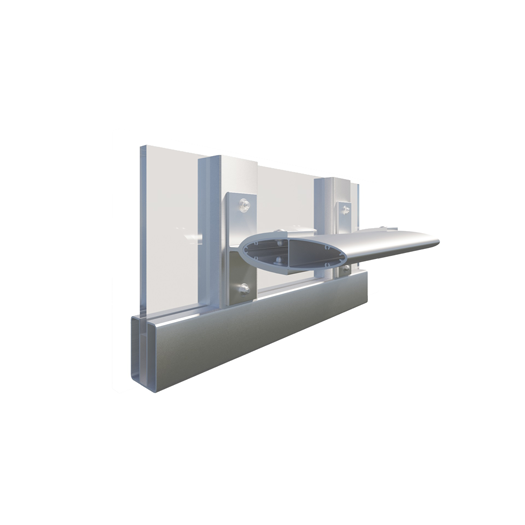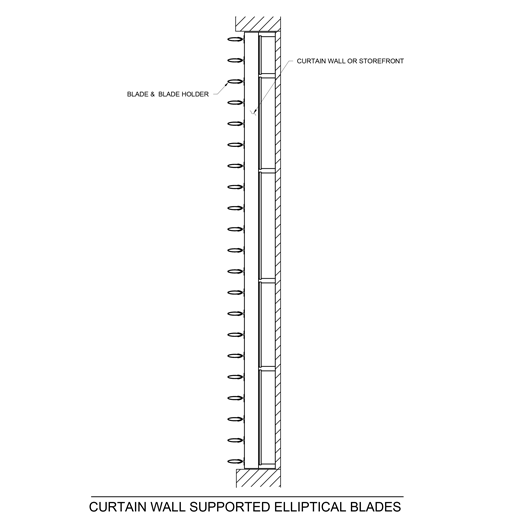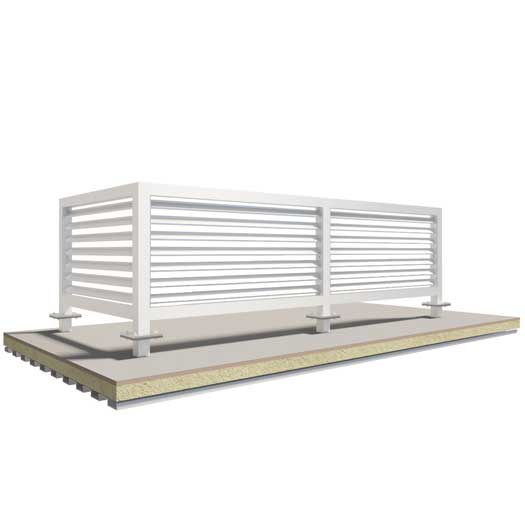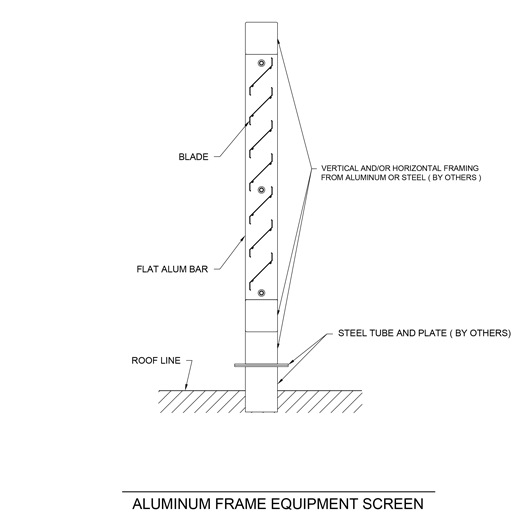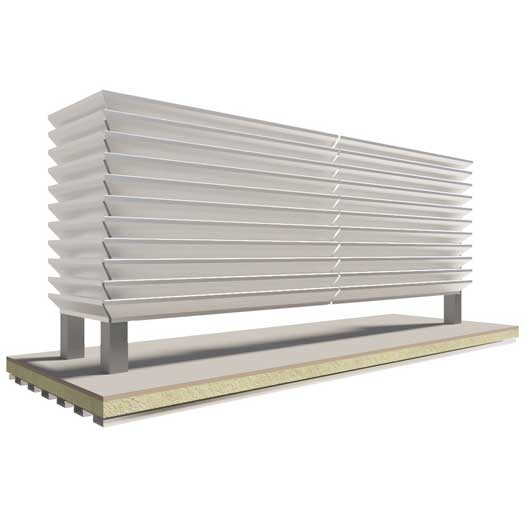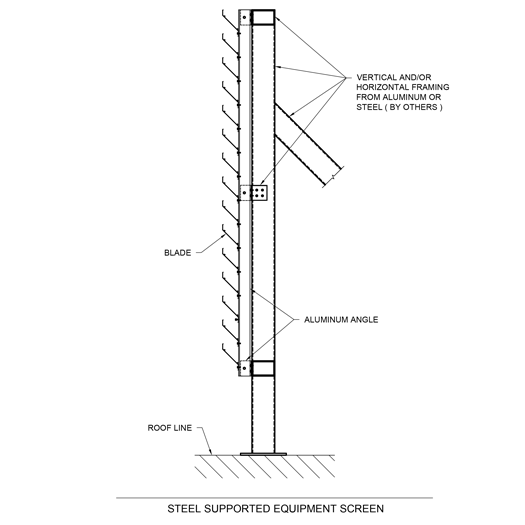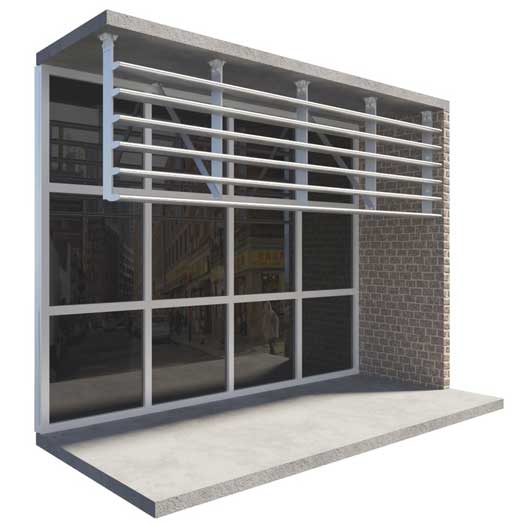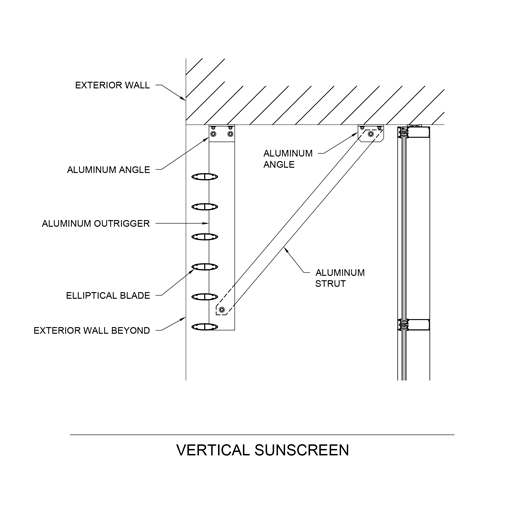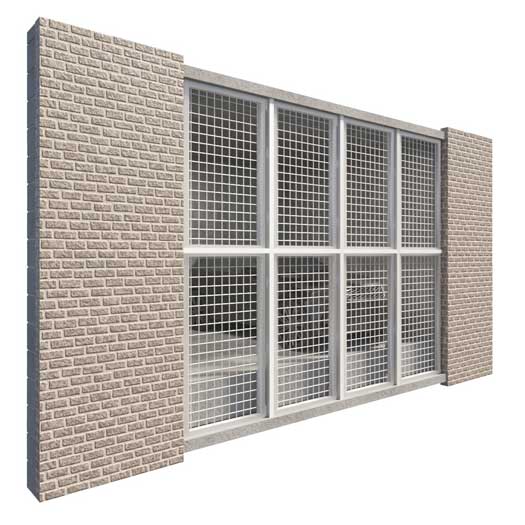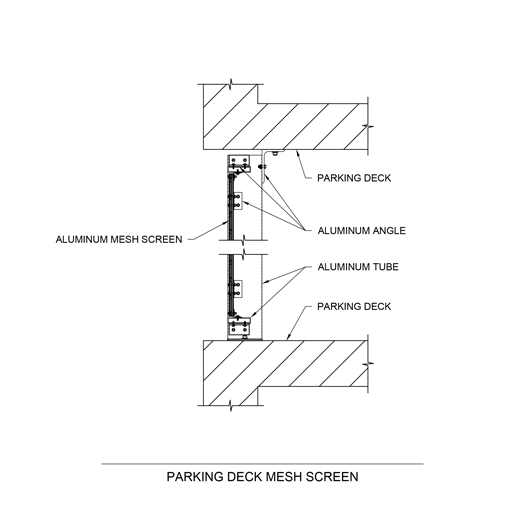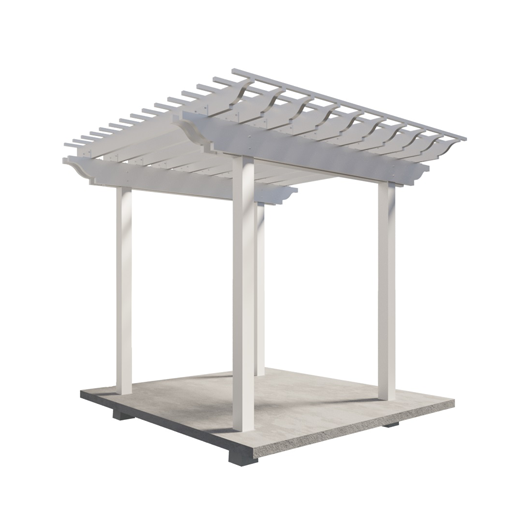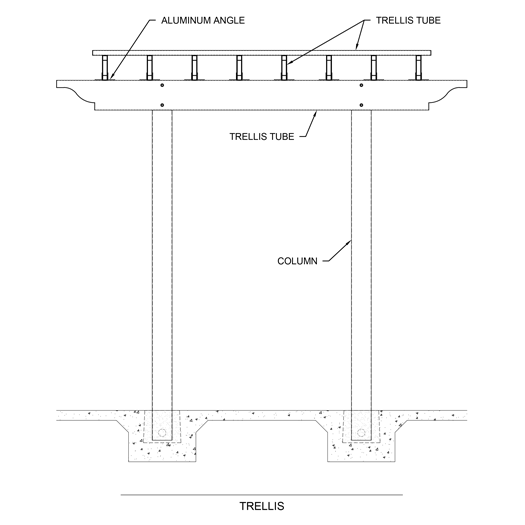Quicklinks
Peachtree Protective Covers is able to provide the design professional an assortment of architectural aluminum sunshades, sunscreens and sun control devices to help in reducing solar heat gain within and along building structures. Using a variety of materials and styles we can provide vertical, horizontal, cantilevered or inclined projections that meet your design criteria. Blade configurations and spacings can be varied to filter up to 80% of the sun’s heat and light level. Dynamic wind loads are a consideration with this type of application. Support rods and connecting hardware may be used from above or below to address design loads and aesthetic values. Support rods may be extruded aluminum or stainless steel.
Sloped Sunscreens
Horizontal Sunscreens
Cantilever
Cantilevered Bullnose
With Hanger Above
With Kicker Below
Curtain Wall Supported Elliptical Blade
Equipment Screens
Aluminum Framed
Steel Supported
Vertical Screens
Sunscreen
Parking Deck Mesh Screen
Trellis
Components
Outriggers
Tapered Wedge
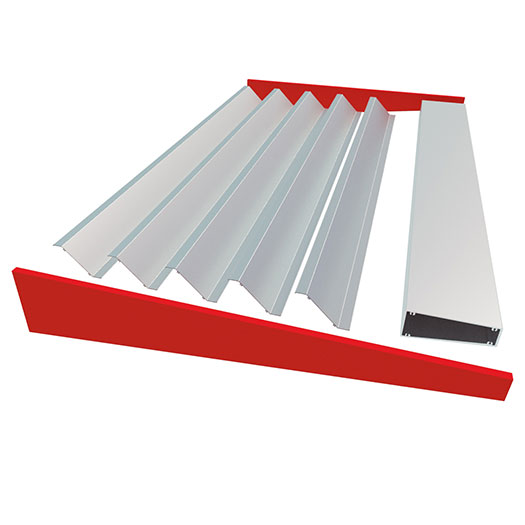
Tapered Bar
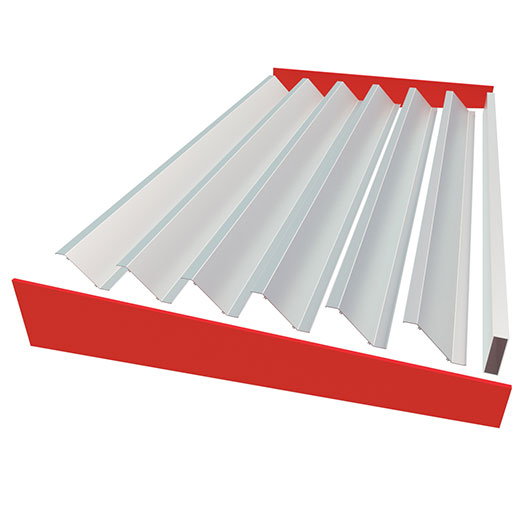
Square Bullnose
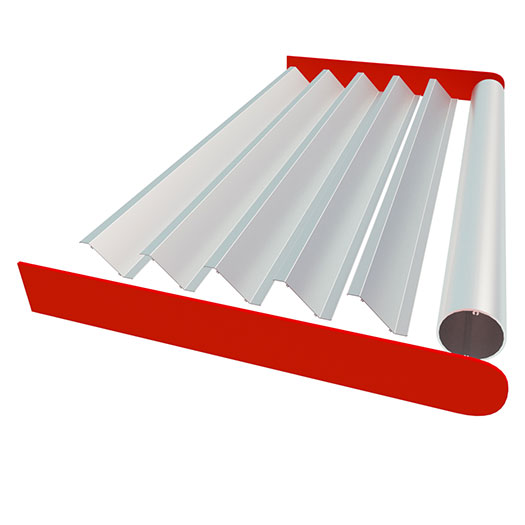
Square Bar
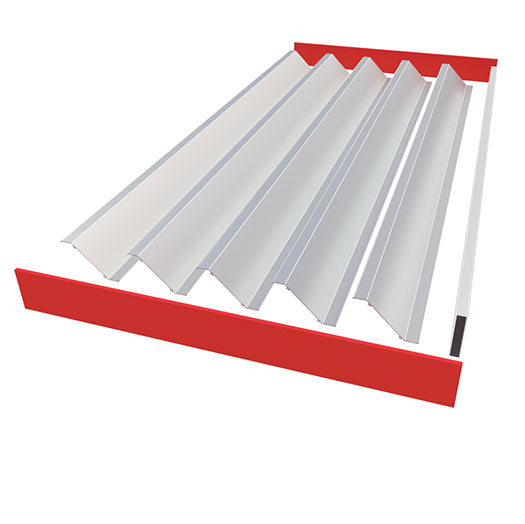
Square Channel
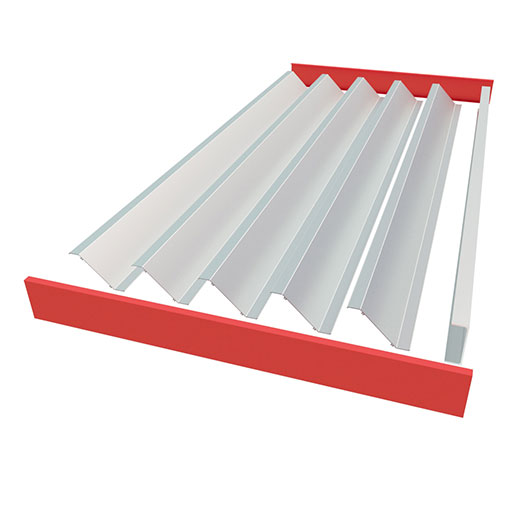
Square Tube
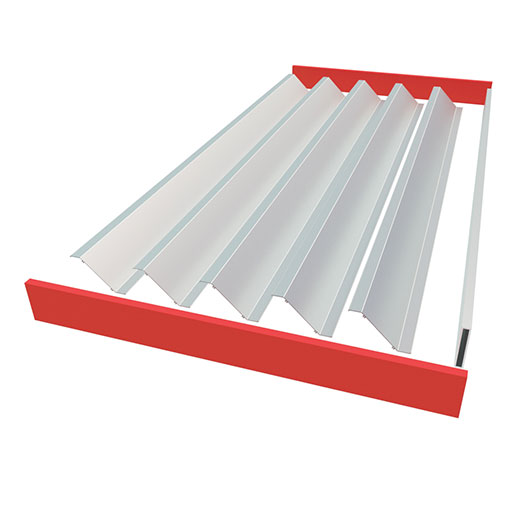
Blades
Elliptical
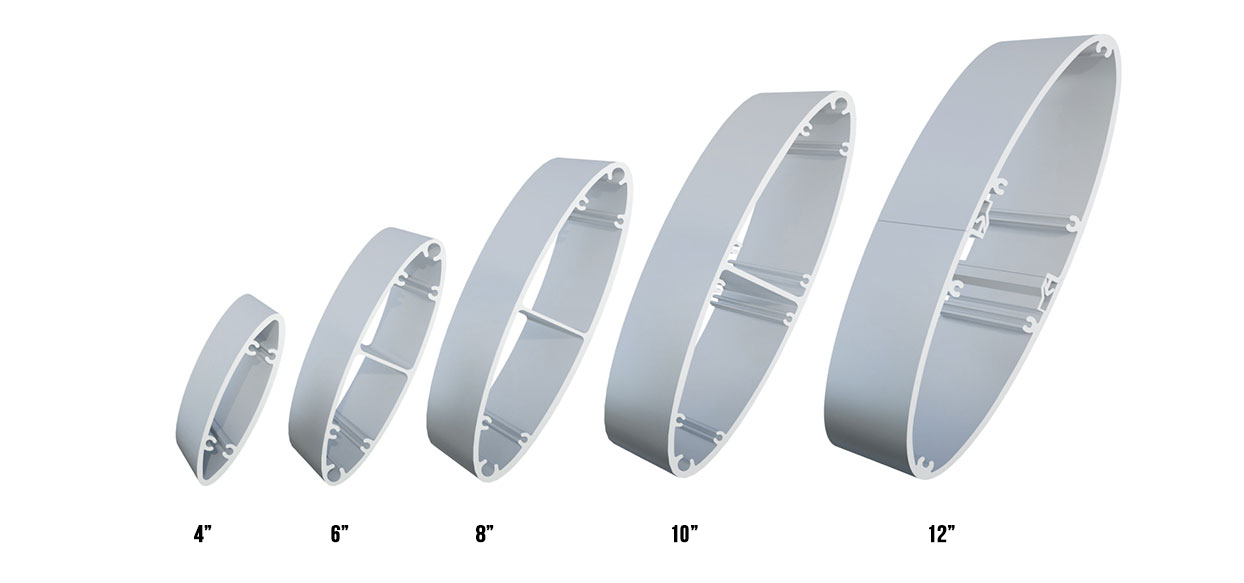
Round

Rectangular
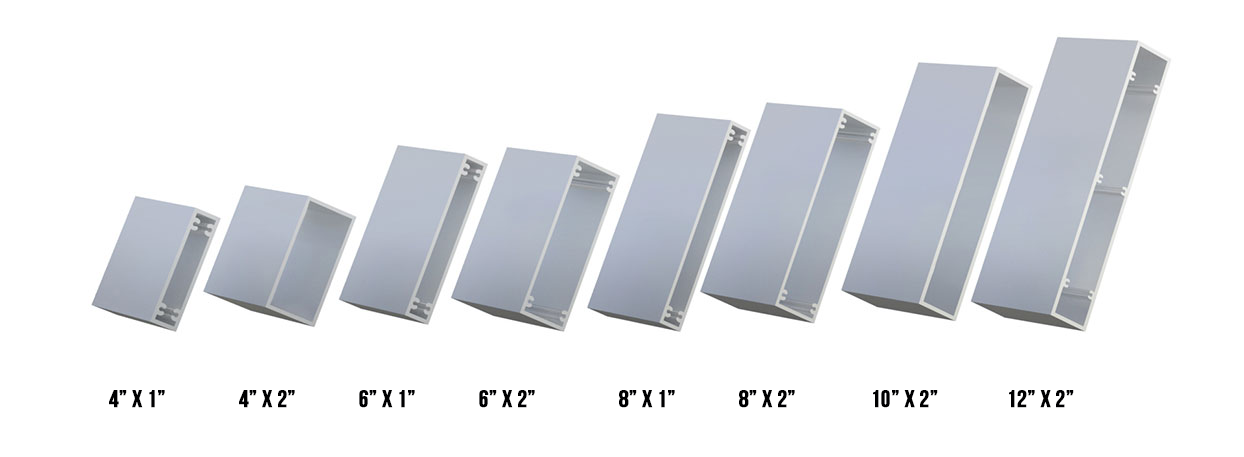
Louver

Tapered Louver

Specifications
Finishes
Standard Anodize Colors
 |
Technical Description
Class 2, Clear Anodic Finish – AA-M12C22A31 (Mechanical Finish: nonspecular as fabricated; Chemical Finish: etched, medium matte, clear coating 0.4 mils to 0.7 mils thick), complying with AAMA 611.
Class 1, Clear Anodic Finish – AA-M12C22A41 (Mechanical Finish: nonspecular as fabricated; Chemical Finish: etched, medium matted, clear coating 0.7 mils or thicker),complying with AAMA 611.
Warranty
One (1) year for Class 2, Clear Anodize
Five (5) year for Class 1, Clear Anodize

Warranty
Five (5) year for Two-Coat System
Ten (10) year for Three-Coat System
Twenty (20) year for Three-Coat System (if specified)
Technical Description
High performance Organic Coating Finish: AA-C12C42R1x (Chemical Finish: cleaned with inhibited chemicals; Chemical Finish: acid-chromate-fluoride-phosphate conversion coating; Organic Coating: as specified below). Prepare, pretreat, and apply coating to exposed metal surfaces to comply with coating and resin manufacturer’s written instructions.
Fluoropolymer Two-Coat Coating System – thermocured system consisting of specially formulated inhibitive primer and fluoropolymer color topcoat containing not less than 70 percent polyvinylidene fluoride resin by weight; complying with AAMA 2604.
Fluoropolymer Three-Coat Coating System – thermocured system consisting of specially formulated inhibitive primer, fluoropolymer color coat, and clear fluoropolymer topcoat, with both color coat and clear topcoat containing not less than 70 percent polyvinylidene fluoride resin by weight; complying with AAMA 2605.
Solar management is becoming an important consideration on new construction within in the architectural community. The goal is to provide the architect and owner a product that can reduce the “cooling load” with the use from passive solar shading devices. Using extruded aluminum sunshades, while serving to achieve this objective, offers the opportunity to enhance aesthetic appeal and contribute to LEED certification of the building.
Select the Attitude for the Assembly
The orientation of the sunshade system to the building; whether, horizontal, inclined or sloped or vertical; has a bearing on the effectiveness of the chosen system.
Select the Aluminum Blade Shape/Profile and Size
As the shading infill for the sunshade system, blades are the most critical component. The size, shape and spacing of the blades determine shading, the spacing between the structural outriggers elements and, in doing so, play a larger part in the cost of the system.
Choose a Shape for Outrigger Configuration
The depth, thickness and shape of the outriggers is driven by the projection from the face of the building, the span between structural connections to the building and shape or profile of the leading edge or fascia of the sunshade system.
Choose Appropriate Finish
Selection of finish greatly affects the installed cost of the sunshade system. Clear Anodize is the most cost effect finish. To introduce color, a fluoropolymer resin based paint must be used. These are paints typically known as Kynar, Hylar and Duranar and are high end finishes which come in a wide array of colors. These premium finishes are the most costly available for solar control device systems and can vary greatly depending on the color selected
Insist on an Engineered System
All sunshade systems must be designed to withstand all loads without failure in stress and deflection. Live loads, wind loads, ice and snow (ground and drifting) loads must be considered in the design of these structural systems. Requiring that structural calculations, signed and sealed by a registered Professional Engineer, is an essential part of a getting a quality system.
